

Research: Literature Review
- Types of research
- The question
- Literature Review
- Research Proposals
- Database searching - how to
- APA Referencing
- Mātauranga Māori
- Keeping up to date
- Images/Media
Introduction
This tab will explain what literature reviews are and offer insights into the form and construction of literature reviews in the humanities, social sciences, and sciences.
Literature reviews - the videos!
The short version.... How to write a lit review
The longer version... Literature Reviews: An Overview for Graduate Students
The slightly longer version ... Writing a Literature Review Paper
AI Tools for Research
Find below a range of AI driven search tools to support your academic research. Note these search tools may not find full text articles but you can search for any article title without full text in our Library Search box to see if it is in one of our databases or you can paste the details of any article into Ask Live and a librarian can also check for its availability for you.
- ChatPDF An AI tool that can help researchers to understand PDF files. It can automatically extract text from PDFs, translate languages, and answer questions about the content.
- Consensus : Evidence-based answers faster Consensus is a search engine that uses AI to find insights in research papers
- Elicit : the AI research assistant Elicit can find relevant papers without perfect keyword match, summarize takeaways from the paper specific to your question, and extract key information from the papers. Requires you to sign up first.
- Keenious Keenious is an academic search engine that recommends relevant research papers by analyzing your document using artificial intelligence algorithms. It uses Open Alex (as does Semantic Scholar) which is open source. You can upload an abstract of a useful article or your assignment and get it to find supporting articles. The free version gives you one page of results for each search. Add Keenious as a sidebar in Microsoft Word (Add-Ins / Get Add ins) to get relevant research without breaking your workflow.
- Research Rabbit an AI tool that helps researchers to manage their research. It can track citations, create bibliographies, and generate summaries of papers. Research Rabbit can help researchers to stay organized and make better use of their time. more... less... An AI tool that helps researchers track citations, create bibliographies, and generate summaries of papers. Research Rabbit can help researchers to stay organized and make better use of their time.
- Scite Assistant Scite Assistant is an AI-powered research tool that helps researchers to find, read, and understand scientific literature. It can automatically extract key information from papers, such as the research question, methods, results, and conclusions.
- Semantic Scholar Semantic Scholar provides free, AI-driven search and discovery tools, and open resources for the global research community. Over 200 million academic papers are indexed.
How to carry out a literature review
- Learning Services: Literature review A guided pathway from Learning Services to help you learn the basics of writing a literature review and start work on your assignment. Includes a step by step guide, downloadable resources and where to go for more help.
- Learning Services: Literature review A brief printable PDF from our own Learning Services on how to construct a winning literature review.
- Literature review: Getting started A comprehensive guide to starting your literature review by RMIT University Library.
- Literature reviews for nursing An OER Commons resource free to download.
- How to... carry out a literature review - by Emerald Publishing Outlines the purpose and methodology of undertaking a literature review and how to structure and write one up.
- Literature review vs Annotated bibliography vs Research paper A short guide to the differences between these.
- Template Example for Search Strategies in Databases Use this template to construct your keyword and subject heading searches in databases, Google Scholar and Library Search
- Writing a literature review Guidelines by Otago Polytechnic.
- McGrath, J. M., Brown, R. E., & Samra, H. A. (2012). Before you search the literature: How to prepare and get the most out of citation databases. Newborn & Infant Nursing Reviews, September, 12(3), 162-170.

Photo by Fahrul Azmi on Unsplash
Literature Review eBooks/Books
- << Previous: The question
- Next: Research Proposals >>
- Last Updated: Jun 6, 2024 10:16 AM
- URL: https://subjectguides.ara.ac.nz/research

Research Skills
- Understanding the assignment question
- Developing a research question
- Developing a search strategy
- Critical evaluation of sources
- Using OneSearch
- Using the Catalogue
- Using Wintec databases
- Searching online
- Using eBooks
Literature reviews
- Annotated bibliographies
- Case studies
- Creative research
- Design thinking
- Systematic reviews
- Using AI tools for research
- Learner Success Toolkit

A literature review is an overview and critical evaluation of published information about a topic. It's purpose is to identify:
- what is already known about the subject field
- common themes and methods
- any gaps in the literature
It doesn't present any original research.

Quick links
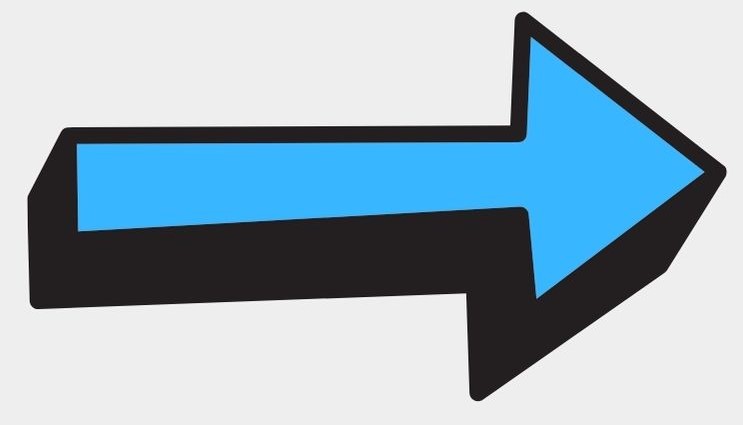
Steps in the literature review process

Adapted from Georgia State University. Literature reviews: Introduction. https://research.library.gsu.edu/c.php?g=115595&p=753257

Selecting a topic
There are two important components in topic selection:
1. Make sure you have an interest in the topic . This will ensure the literature review process is enjoyable and you are motivated to do it!
2. Choose a topic that has been researched. You won't be able to write a literature review about a topic that has no literature!
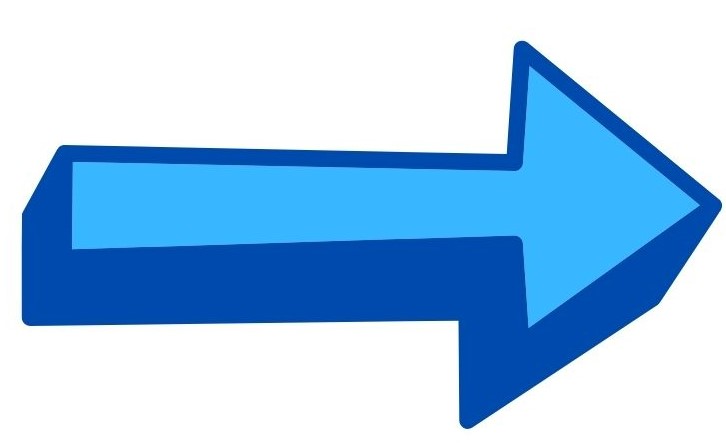
3. Have some background knowledge on the topic. Use a reliable source, like an encyclopedia to give you a general understanding of your topic before you begin your research. Encyclopedias can be general, or they can be specialised, like Te Ara Encyclopedia of New Zealand .
4. Determine the scope of your topic. The narrower your chosen topic, the easier it will be to find literature.

Identifying places to search
While it is good to have a variety of reliable sources in your literature review, such as books, conference proceedings, and theses, journal articles are often the best, because they are often peer-reviewed and regularly published, so you should be able to find up-to-date research if you need it.
The best place to begin your search for journal articles is the Wintec databases.

Reading and analysing the literature
Your search should throw up more results than you need, as some won't be completely relevant to your topic.
When you have found literature that meets the scope of your topic and that you know is a credible source , you will need to read it with a set of questions in mind (write notes about the source as you are reading):
It can be helpful to use a matrix when analysing your literature to keep your ideas clear and ordered.
A narrative matrix is useful for quantitative research. You can adapt the following example to suit your needs:
Northern Territory Government. (n.d). Literature review writing: Read and analyse the literature . https://library.health.nt.gov.au/litreview/analysing
A thematic matrix is useful for qualitative research. You can adapt the following example to suit your needs:
|
|
| ||||||
American Psychological Association

This resource from the American Psychological Association will help you identify and break down the important parts of the research you are analysing and assist you to paraphrase its findings.

Writing your literature review
What makes a good literature review?
A good literature review will do a lot more than simply summarise the literature found. It:
Source: Cambridge Dictionary. https://dictionary.cambridge.org/dictionary/english/synthesize
But what does a literature review look like?
A literature review is structured much like an essay in that it needs an introduction, a body, and a conclusion.
Georgia State University

Georgia State University provides an excellent outline of the parts of a literature review and what they do.
Otago Polytechnic

Otago Polytechnic has a PDF you can print out with a guide and exemplar of how to write your literature review.
Video tutorials
RMIT University

RMIT University has a comprehensive guide with step-by-step tutorials on how to structure and write a literature review.
- << Previous: Types of assignments
- Next: Annotated bibliographies >>
- Last Updated: Jun 7, 2024 5:51 PM
- URL: https://libguides.wintec.ac.nz/Library_research_skills
Have a language expert improve your writing
Run a free plagiarism check in 10 minutes, generate accurate citations for free.
- Knowledge Base
Methodology
- How to Write a Literature Review | Guide, Examples, & Templates
How to Write a Literature Review | Guide, Examples, & Templates
Published on January 2, 2023 by Shona McCombes . Revised on September 11, 2023.
What is a literature review? A literature review is a survey of scholarly sources on a specific topic. It provides an overview of current knowledge, allowing you to identify relevant theories, methods, and gaps in the existing research that you can later apply to your paper, thesis, or dissertation topic .
There are five key steps to writing a literature review:
- Search for relevant literature
- Evaluate sources
- Identify themes, debates, and gaps
- Outline the structure
- Write your literature review
A good literature review doesn’t just summarize sources—it analyzes, synthesizes , and critically evaluates to give a clear picture of the state of knowledge on the subject.
Instantly correct all language mistakes in your text
Upload your document to correct all your mistakes in minutes

Table of contents
What is the purpose of a literature review, examples of literature reviews, step 1 – search for relevant literature, step 2 – evaluate and select sources, step 3 – identify themes, debates, and gaps, step 4 – outline your literature review’s structure, step 5 – write your literature review, free lecture slides, other interesting articles, frequently asked questions, introduction.
- Quick Run-through
- Step 1 & 2
When you write a thesis , dissertation , or research paper , you will likely have to conduct a literature review to situate your research within existing knowledge. The literature review gives you a chance to:
- Demonstrate your familiarity with the topic and its scholarly context
- Develop a theoretical framework and methodology for your research
- Position your work in relation to other researchers and theorists
- Show how your research addresses a gap or contributes to a debate
- Evaluate the current state of research and demonstrate your knowledge of the scholarly debates around your topic.
Writing literature reviews is a particularly important skill if you want to apply for graduate school or pursue a career in research. We’ve written a step-by-step guide that you can follow below.

Receive feedback on language, structure, and formatting
Professional editors proofread and edit your paper by focusing on:
- Academic style
- Vague sentences
- Style consistency
See an example

Writing literature reviews can be quite challenging! A good starting point could be to look at some examples, depending on what kind of literature review you’d like to write.
- Example literature review #1: “Why Do People Migrate? A Review of the Theoretical Literature” ( Theoretical literature review about the development of economic migration theory from the 1950s to today.)
- Example literature review #2: “Literature review as a research methodology: An overview and guidelines” ( Methodological literature review about interdisciplinary knowledge acquisition and production.)
- Example literature review #3: “The Use of Technology in English Language Learning: A Literature Review” ( Thematic literature review about the effects of technology on language acquisition.)
- Example literature review #4: “Learners’ Listening Comprehension Difficulties in English Language Learning: A Literature Review” ( Chronological literature review about how the concept of listening skills has changed over time.)
You can also check out our templates with literature review examples and sample outlines at the links below.
Download Word doc Download Google doc
Before you begin searching for literature, you need a clearly defined topic .
If you are writing the literature review section of a dissertation or research paper, you will search for literature related to your research problem and questions .
Make a list of keywords
Start by creating a list of keywords related to your research question. Include each of the key concepts or variables you’re interested in, and list any synonyms and related terms. You can add to this list as you discover new keywords in the process of your literature search.
- Social media, Facebook, Instagram, Twitter, Snapchat, TikTok
- Body image, self-perception, self-esteem, mental health
- Generation Z, teenagers, adolescents, youth
Search for relevant sources
Use your keywords to begin searching for sources. Some useful databases to search for journals and articles include:
- Your university’s library catalogue
- Google Scholar
- Project Muse (humanities and social sciences)
- Medline (life sciences and biomedicine)
- EconLit (economics)
- Inspec (physics, engineering and computer science)
You can also use boolean operators to help narrow down your search.
Make sure to read the abstract to find out whether an article is relevant to your question. When you find a useful book or article, you can check the bibliography to find other relevant sources.
You likely won’t be able to read absolutely everything that has been written on your topic, so it will be necessary to evaluate which sources are most relevant to your research question.
For each publication, ask yourself:
- What question or problem is the author addressing?
- What are the key concepts and how are they defined?
- What are the key theories, models, and methods?
- Does the research use established frameworks or take an innovative approach?
- What are the results and conclusions of the study?
- How does the publication relate to other literature in the field? Does it confirm, add to, or challenge established knowledge?
- What are the strengths and weaknesses of the research?
Make sure the sources you use are credible , and make sure you read any landmark studies and major theories in your field of research.
You can use our template to summarize and evaluate sources you’re thinking about using. Click on either button below to download.
Take notes and cite your sources
As you read, you should also begin the writing process. Take notes that you can later incorporate into the text of your literature review.
It is important to keep track of your sources with citations to avoid plagiarism . It can be helpful to make an annotated bibliography , where you compile full citation information and write a paragraph of summary and analysis for each source. This helps you remember what you read and saves time later in the process.
To begin organizing your literature review’s argument and structure, be sure you understand the connections and relationships between the sources you’ve read. Based on your reading and notes, you can look for:
- Trends and patterns (in theory, method or results): do certain approaches become more or less popular over time?
- Themes: what questions or concepts recur across the literature?
- Debates, conflicts and contradictions: where do sources disagree?
- Pivotal publications: are there any influential theories or studies that changed the direction of the field?
- Gaps: what is missing from the literature? Are there weaknesses that need to be addressed?
This step will help you work out the structure of your literature review and (if applicable) show how your own research will contribute to existing knowledge.
- Most research has focused on young women.
- There is an increasing interest in the visual aspects of social media.
- But there is still a lack of robust research on highly visual platforms like Instagram and Snapchat—this is a gap that you could address in your own research.
There are various approaches to organizing the body of a literature review. Depending on the length of your literature review, you can combine several of these strategies (for example, your overall structure might be thematic, but each theme is discussed chronologically).
Chronological
The simplest approach is to trace the development of the topic over time. However, if you choose this strategy, be careful to avoid simply listing and summarizing sources in order.
Try to analyze patterns, turning points and key debates that have shaped the direction of the field. Give your interpretation of how and why certain developments occurred.
If you have found some recurring central themes, you can organize your literature review into subsections that address different aspects of the topic.
For example, if you are reviewing literature about inequalities in migrant health outcomes, key themes might include healthcare policy, language barriers, cultural attitudes, legal status, and economic access.
Methodological
If you draw your sources from different disciplines or fields that use a variety of research methods , you might want to compare the results and conclusions that emerge from different approaches. For example:
- Look at what results have emerged in qualitative versus quantitative research
- Discuss how the topic has been approached by empirical versus theoretical scholarship
- Divide the literature into sociological, historical, and cultural sources
Theoretical
A literature review is often the foundation for a theoretical framework . You can use it to discuss various theories, models, and definitions of key concepts.
You might argue for the relevance of a specific theoretical approach, or combine various theoretical concepts to create a framework for your research.
Like any other academic text , your literature review should have an introduction , a main body, and a conclusion . What you include in each depends on the objective of your literature review.
The introduction should clearly establish the focus and purpose of the literature review.
Depending on the length of your literature review, you might want to divide the body into subsections. You can use a subheading for each theme, time period, or methodological approach.
As you write, you can follow these tips:
- Summarize and synthesize: give an overview of the main points of each source and combine them into a coherent whole
- Analyze and interpret: don’t just paraphrase other researchers — add your own interpretations where possible, discussing the significance of findings in relation to the literature as a whole
- Critically evaluate: mention the strengths and weaknesses of your sources
- Write in well-structured paragraphs: use transition words and topic sentences to draw connections, comparisons and contrasts
In the conclusion, you should summarize the key findings you have taken from the literature and emphasize their significance.
When you’ve finished writing and revising your literature review, don’t forget to proofread thoroughly before submitting. Not a language expert? Check out Scribbr’s professional proofreading services !
This article has been adapted into lecture slides that you can use to teach your students about writing a literature review.
Scribbr slides are free to use, customize, and distribute for educational purposes.
Open Google Slides Download PowerPoint
If you want to know more about the research process , methodology , research bias , or statistics , make sure to check out some of our other articles with explanations and examples.
- Sampling methods
- Simple random sampling
- Stratified sampling
- Cluster sampling
- Likert scales
- Reproducibility
Statistics
- Null hypothesis
- Statistical power
- Probability distribution
- Effect size
- Poisson distribution
Research bias
- Optimism bias
- Cognitive bias
- Implicit bias
- Hawthorne effect
- Anchoring bias
- Explicit bias
A literature review is a survey of scholarly sources (such as books, journal articles, and theses) related to a specific topic or research question .
It is often written as part of a thesis, dissertation , or research paper , in order to situate your work in relation to existing knowledge.
There are several reasons to conduct a literature review at the beginning of a research project:
- To familiarize yourself with the current state of knowledge on your topic
- To ensure that you’re not just repeating what others have already done
- To identify gaps in knowledge and unresolved problems that your research can address
- To develop your theoretical framework and methodology
- To provide an overview of the key findings and debates on the topic
Writing the literature review shows your reader how your work relates to existing research and what new insights it will contribute.
The literature review usually comes near the beginning of your thesis or dissertation . After the introduction , it grounds your research in a scholarly field and leads directly to your theoretical framework or methodology .
A literature review is a survey of credible sources on a topic, often used in dissertations , theses, and research papers . Literature reviews give an overview of knowledge on a subject, helping you identify relevant theories and methods, as well as gaps in existing research. Literature reviews are set up similarly to other academic texts , with an introduction , a main body, and a conclusion .
An annotated bibliography is a list of source references that has a short description (called an annotation ) for each of the sources. It is often assigned as part of the research process for a paper .
Cite this Scribbr article
If you want to cite this source, you can copy and paste the citation or click the “Cite this Scribbr article” button to automatically add the citation to our free Citation Generator.
McCombes, S. (2023, September 11). How to Write a Literature Review | Guide, Examples, & Templates. Scribbr. Retrieved June 9, 2024, from https://www.scribbr.com/dissertation/literature-review/
Is this article helpful?
Shona McCombes
Other students also liked, what is a theoretical framework | guide to organizing, what is a research methodology | steps & tips, how to write a research proposal | examples & templates, "i thought ai proofreading was useless but..".
I've been using Scribbr for years now and I know it's a service that won't disappoint. It does a good job spotting mistakes”

Study Smart: Writing Assignments
- Getting Started
- Finding Information
- Writing Assignments
- Exam Preparation
ON THIS PAGE
Managing Your Assignments
Managing Your References
Citation Styles
MANAGING YOUR ASSIGNMENTS
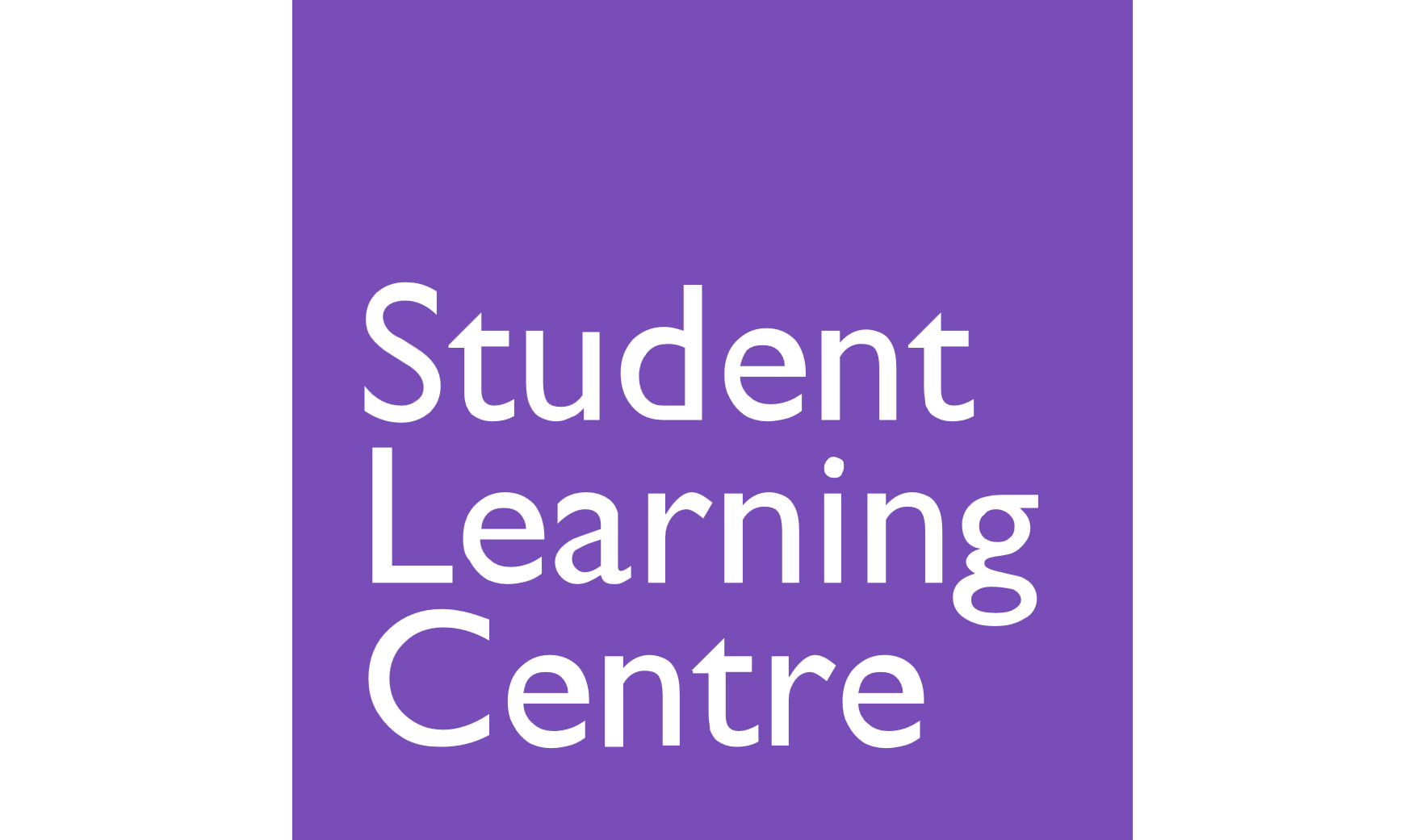
- Writing essays
- Preparing reports
- Writing a literature review
- Giving a presentation
Many downloadable tip sheets are available, including:
- Planning and writing assignments
- Guidelines for writing and editing
- Preparing for a presentation
You can arrange to meet with a Learning Adviser , if you would like individual assistance.
MANAGING YOUR REFERENCES
The easiest way to manage your references is to use reference management software .
These types of software can store and organise your references. They can also generate citations and bibliographies for your assignments.
There are several commonly used reference managers including EndNote .
CITATION STYLES
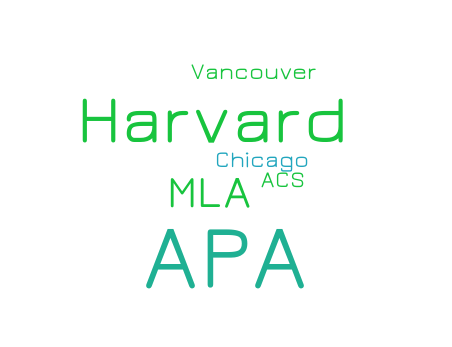
If you are unsure which citation style to use:
- read your Course Outline
- ask your lecturer or tutor
More information about citation styles is available on the Referencing/Citation Styles subject guide.
The University of Otago takes plagiarism seriously. Complete these brief modules to check your understanding of plagiarism: (click each one to begin - they will open in a new window)

For more information about plagiarism, see the University of Otago Academic Integrity website.
- << Previous: Finding Information
- Next: Exam Preparation >>
- Last Updated: Jun 28, 2017 4:03 PM
- URL: https://otago.libguides.com/studysmartLynne
An investigation into the drivers of employee self-engagement through the application of Police High Performance Framework
Author: masoud mansouri garakani, supervisors: james harrison, sean quifors.
Mansouri Garakani, M. (2021). An investigation into the drivers of employee self-engagement through the application of Police High Performance Framework. (Unpublished document submitted in partial fulfilment of the requirements for the degree of Master of Professional Practice). Otago Polytechnic | Te Pūkenga, New Zealand.
This research project was aimed at investigating the drivers of Employee Self-Engagement through the application of Police High Performance Framework at New Zealand Police. Identify effective methods for using Police High Performance Framework to achieve self-engagement at work, analyse the effectiveness of the identified methods, plan how to test the proposed framework in practice based on a valid research method, document the metrics and measuring approaches used to evaluate the impact of the framework.
The secondary aim of this research project was to achieve the theoretical knowledge of Mahi Tahi (working together) approach, related methods and tools for engaging employees, practical knowledge of how to translate theory into practice and how to enhance engagement from the staff perspective, skills in designing practical improvements, leading people through an implementation phase and test theories in practice and finally develop capability as a facilitator to enhance individual staff engagement.
This literature review found there were seven main drivers to employee engagement. They are work environment, leadership, team and co-worker relationships, training and career development, compensation, organisational policies, and workplace wellbeing. The researcher investigated these drivers through one-to-one interview with seven members of staff across the three roles within New Zealand Police.
The study found that out of the seven main drivers there were three, that were significant facilitators for engagement levels at Police. They are working environment, relationship with one’s co-workers and trust with leaders. This study proved that it is possible for employees to be engaged at work even if the main facilitators coined by academics as important are not in fact present. The research puts forward the idea that there are certain components to employee engagement and that they do not all have to be present in order to have an engaged workforce.
This study also found that the Police High Performance Framework would help Police to create a more collaborative, performance-oriented environment that focusses on helping their employees be their best in Police. It also helps them to build a more supportive, engaging culture so their employees feel empowered to make the right call based on what they encounter. Therefore, the researcher endorsed this framework.
Thesis has been embargoed. A copy of the thesis is not publicly available.


- University of La Verne
- Subject Guides
Educational/School Counseling
- Literature Review Resources
- EBSCOHost Databases/Specific Journals
- Counseling Books
- Websites for Educational Counseling
- Citation Help
- How to write annotated bibliographies
- Identifying and Searching for Empirical Articles. An interactive ULV Tutorial created by Keren Darancette
Literature Review Guides
- How to write a literature review
- The Literature Review:a few steps on conducting it Permission granted from Writing at the University of Toronto
- Six steps for writing a literature review This blog, written by Tanya Golash-Bozal PhD an Associate Professor of Sociology at the University of California at Merced, offers a very nice and simple advice on how to write a literature review from the point of view of an experience professional.
- The Writing Center, University of North Carolina at Chapel Hill Permission granted to use this guide.
- Writing Center University of North Carolina
- Literature Reviews Otago Polytechnic in New Zealand produced this guide and in my opinion, it is one of the best. NOTE: Except where otherwise noted, content on this site is licensed under a Creative Commons Attribution-NonCommercial-ShareAlike 4.0 International License. However, all images and Otago Polytechnic videos are copyrighted.
What Are Empirical Articles?
As a student at the University of La Verne, faculty may instruct you to read and analyze empirical articles when writing a research paper, a senior or master's project, or a doctoral dissertation. How can you recognize an empirical article in an academic discipline? An empirical research article is an article which reports research based on actual observations or experiments. The research may use quantitative research methods, which generate numerical data and seek to establish causal relationships between two or more variables.(1) Empirical research articles may use qualitative research methods, which objectively and critically analyze behaviors, beliefs, feelings, or values with few or no numerical data available for analysis.(2)
How can I determine if I have found an empirical article?
When looking at an article or the abstract of an article, here are some guidelines to use to decide if an article is an empirical article.
- Is the article published in an academic, scholarly, or professional journal? Popular magazines such as Business Week or Newsweek do not publish empirical research articles; academic journals such as Business Communication Quarterly or Journal of Psychology may publish empirical articles. Some professional journals, such as JAMA: Journal of the American Medical Association publish empirical research. Other professional journals, such as Coach & Athletic Director publish articles of professional interest, but they do not publish research articles.
- Does the abstract of the article mention a study, an observation, an analysis or a number of participants or subjects? Was data collected, a survey or questionnaire administered, an assessment or measurement used, an interview conducted? All of these terms indicate possible methodologies used in empirical research.
- Introduction -The introduction provides a very brief summary of the research.
- Methodology -The method section describes how the research was conducted, including who the participants were, the design of the study, what the participants did, and what measures were used.
- Results -The results section describes the outcomes of the measures of the study.
- Discussion -The discussion section contains the interpretations and implications of the study.
- Conclusion -
- References -A reference section contains information about the articles and books cited in the report and should be substantial.
- How long is the article? An empirical article is usually substantial; it is normally seven or more pages long.
When in doubt if an article is an empirical research article, share the article citation and abstract with your professor or a librarian so that we can help you become better at recognizing the differences between empirical research and other types of scholarly articles.
How can I search for empirical research articles using the electronic databases available through Wilson Library?
- A quick and somewhat superficial way to look for empirical research is to type your search terms into the database's search boxes, then type STUDY OR STUDIES in the final search box to look for studies on your topic area. Be certain to use the ability to limit your search to scholarly/professional journals if that is available on the database. Evaluate the results of your search using the guidelines above to determine if any of the articles are empirical research articles.
- In EbscoHost databases, such as Education Source , on the Advanced Search page you should see a PUBLICATION TYPE field; highlight the appropriate entry. Empirical research may not be the term used; look for a term that may be a synonym for empirical research. ERIC uses REPORTS-RESEARCH. Also find the field for INTENDED AUDIENCE and highlight RESEARCHER. PsycArticles and Psycinfo include a field for METHODOLOGY where you can highlight EMPIRICAL STUDY. National Criminal Justice Reference Service Abstracts has a field for DOCUMENT TYPE; highlight STUDIES/RESEARCH REPORTS. Then evaluate the articles you find using the guidelines above to determine if an article is empirical.
- In ProQuest databases, such as ProQuest Psychology Journals , on the Advanced Search page look under MORE SEARCH OPTIONS and click on the pull down menu for DOCUMENT TYPE and highlight an appropriate type, such as REPORT or EVIDENCE BASED. Also look for the SOURCE TYPE field and highlight SCHOLARLY JOURNALS. Evaluate the search results using the guidelines to determine if an article is empirical.
- Pub Med Central , Sage Premier , Science Direct , Wiley Interscience , and Wiley Interscience Humanities and Social Sciences consist of scholarly and professional journals which publish primarily empirical articles. After conducting a subject search in these databases, evaluate the items you find by using the guidelines above for deciding if an article is empirical.
- "Quantitative research" A Dictionary of Nursing. Oxford University Press, 2008. Oxford Reference Online. Oxford University Press. University of La Verne. 25 August 2009
- "Qualitative analysis" A Dictionary of Public Health. Ed. John M. Last, Oxford University Press, 2007. Oxford Reference Online . Oxford University Press. University of La Verne. 25 August 2009
Empirical Articles:Tips on Database Searching
- Identifying Empirical Articles
What is a Literature Review--YouTube
- << Previous: Citation Help
- Next: How to write annotated bibliographies >>
- Last Updated: Feb 26, 2024 10:47 AM
- URL: https://laverne.libguides.com/c.php?g=1088129
Your web browser in unsupported by Otago Polytech. Please update your webbrowser for the best experience.

- Learning support
Essay writing does not need to be a daunting experience. The easiest way to approach the task is by breaking it into stages and progressing through one step at a time.
Essays PDF resource
The essay writing process
The essay writing process can be broken into five stages:
Understand > Plan > Research > Write > Revise and edit
These stages of writing also apply to reports , case studies , reflections , and other written assignments.

The process
1. understand.
What are you being asked to do?
• Identify and understand instructional words like describe or analyse
• Study the marking schedule
• Ask questions to your teacher to clarify expectations.
What are you going to include and how will it be organised?
• Use mind mapping, essay maps or a simple bullet point list
• Refer to the marking schedule
• Plan each paragraph according to the word count
3. Research
What has been written about your topic?
• Make notes from recommended readings, journal articles and trustworthy websites
• Keep track of your sources and references
• Revise your plan as needed.
Do you know how to structure academic paragraphs?
• Refer back to the task and your plan
• Use good essay and paragraph structure .
5. Revise and edit
Have you answered the question? Does your essay make sense?
• Get feedback from a fresh set of eyes
• Make sure you have correctly referenced work where needed
Essay writing resources and tools
- Essay mapping tool
- Planning calculator
- Paragraph structure
Referencing software

Essay structure
The structure.
An introductory paragraph is the first paragraph in an essay. It often contains three parts:
- A hook: To grab the reader's attention.
General statements: A few sentences about your subject that catch the attention of your reader. It helps to state the purpose of your essay.
A thesis statement: One or two sentences that tells your reader the main points of your topic and states the overall ‘plan’ of your essay.
The body consists of a series of paragraphs following the introduction (the amount of paragraphs depends on the length of the essay).
Each paragraph should contain one main idea. It develops that idea in three parts:
• A topic sentence
• Body sentences
• A concluding or linking sentence.
Each paragraph supports the main idea of your essay by breaking it down into smaller ideas or sub topics. Arrange the material going from general to specific (this should be done in your planning). Whenever you use an idea that is not yours, whether quoted or paraphrased, it must be referenced.
A conclusion usually has 2 main parts:
A repeat of the thesis statement but worded differently
A summary of the main points covered and what they mean. Do not add any new information or have any references in your conclusion.
The reference list should be on a separate page.
Find out more about referencing and citing and how to create a reference list.
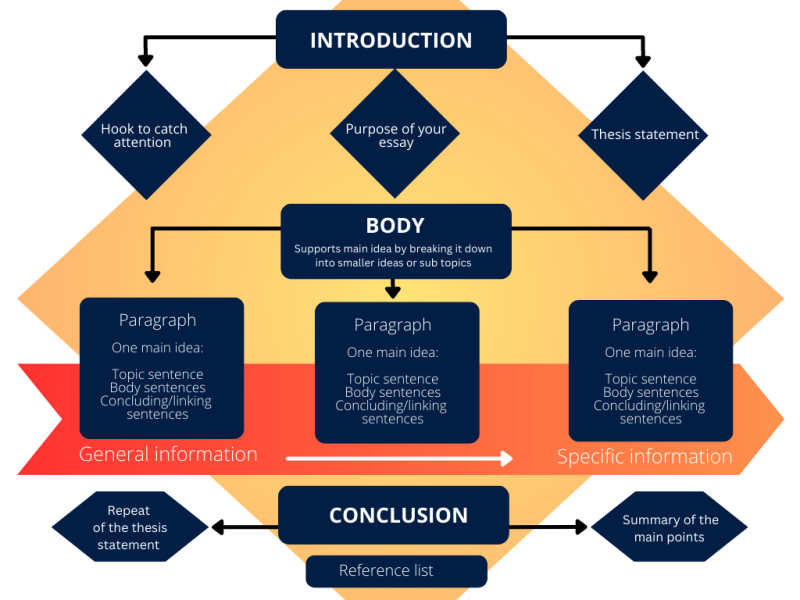
Essay examples
Introduction example.
The introduction is usually about 5% to 10% of the total word count. Here is an example of an introduction paragraph:
| Begin with a relevant context | |
| Explain the topic’s significance. Define key terms if necessary. | |
| End your introduction by clearly stating the objectives of the essay. | |
Body paragraph example
The main body is usually 80% to 90% of the word count. Each paragraph should contain:
| | |
| | |
Conclusion example
The conclusion one parapraph only and is often 5% to 10% of the word count. Be specific and don't give any new information.
| | |
| |
More essay examples
- Sample essay one
- Sample essay two

Attributions
Hero image: Close up of painting by Fiona Art . Licensed under a Pexels.com license.
Image: Working on an assignment , by Armin Rimoldi . Licensed under a Pexels.com license.
Image 2: Abstract painting by Fiona Art . Licensed under a Pexels.com license.
Essay structure by Ara. (n.d.). Permission to use granted.
Was this helpful? Yes No
Related topics
Dunedin Campus H Block 0800 762 786 [email protected]
Auckland Campus Room 101, Level 1 0800 111 212 [email protected]
Central Campus 11 Bannockburn Road 0800 765 9276 [email protected]
Learning Support
Citing and referencing, annotated bibliographies, academic integrity, academic writing, searching for information online.

Contact Otago Polytechnic International +64 3 4773014 New Zealand 0800 762 786 In an emergency 4177 Your suggestions are welcome, please email [email protected]

Except where otherwise noted, content on this site is licensed under a Creative Commons Attribution-NonCommercial-ShareAlike 4.0 International License . However, all images and Otago Polytechnic videos are copyrighted.
OERu support
Working on assignments.

Working on assignments can be scary, especially if you haven’t written one for a while or are new to tertiary study.
This page provides resources you will find useful to help you research, structure, draft and write your assignments.
Essays and assignments
Report writing, reflective practice, searching for information, literature reviews, referencing.
There is a lot of material that can be found on the web to assist you with academic English.
Below is a set of links which will act as a starting point. If you can’t find what you need here, ask for help in the support or course forums .
- Essays (Otago Polytechnic)
- Essay Writing (Video) (Massey University)
- Assignments (Otago Polytechnic)
- Planning and Writing University Assignments (PDF) (Otago University Student Learning Centre)
- Writing for success (PDF) (Saylor)
- Reports (Otago Polytechnic)
- Report writing (Video) (Massey University)
- Business reports (Otago Polytechnic)
- Case study reports (Otago Polytechnic)
- [ http://studentservices.op.ac.nz/learning-support/reflective-practice/ Reflective practice) (Otago Polytechnic)
- Reflective writing Three podcasts (Leeds Beckett University)
- Searching for information (Otago Polytechnic)
- 5 tips for better searching (Smithsonian Libraries)
- Searching on the Net (PDF) (Queensland University of Technology Library)
- Literature reviews What is it and how to undertake one.
- The literature review (Video) (Massey University)
- Literature review overview (RMIT)
- Doing a literature review (Video) (University of Reading)
- Annotated bibliographies (Otago Polytechnic)
- Citing and referencing (Otago Polytechnic)
- Zotero : a free personal research assistant that allows you to store reference information. It helps you collect, organise, cite, and share your research sources.
- Mendeley : allows you to organise, read and annotate documents in one place. You can import documents directly from the Web.
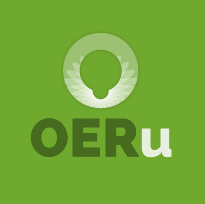
Your web browser in unsupported by Otago Polytech. Please update your webbrowser for the best experience.

- Learning support
Reflective writing
Reflective writing helps you reveal your personal thoughts about a learning experience.
Reflective writing PDF resource
What is reflective wrting?
Reflective writing is a bit different from the academic writing you might be more familiar with.
Teachers usually set reflective assignments to have ākonga reveal their personal thoughts about a learning experience - what happened, why it happened, and what can be learnt from it.
It is not simply describing something but exploring it. You probably often think reflectively without even realising it. Have you ever run out of money before your next pay, then thought “from now on I’ll make a budget”? Then you have thought reflectively!
Reflection can serve as a guide for future action .
A reflective model
For those new to reflective writing it may be wise to follow a simple but effective model which can be used to guide the writing process.
Rolfe, Freshwater and Jasper (2001) created a reflective model based upon three simple questions: What? So what? Now what?
The reflective model
Description
The What? part is simply describing the situation:
- What happened?
- Who was involved?
Theory and knowledge
The So what? part is where what happened is analysed and explained, often in relation to supporting literature.
It is where most of the references will be, if required.
- What is most important/interesting/relevant/useful aspect of the event/idea/situation?
- How can it be explained?
Action
The final part, Now what?, is the one that can make the greatest contribution to practice:
- What have I learned?
- How can it be applied in the future?
What to include
Don't just describe: explore and explain what happened.
Be honest: it's ok to admit to making mistakes as well as success. However, you should also show how you understand why things happen and what you are going to do to improve.
Be selective: you don’t have to write about everything that happened, just key events or ideas.
Look to the future: reflect on what happened in the past and how it will have an impact on future ideas or activities.
Examples of reflective questions
Use some of these questions based on the “What? So What? Now what?” model to stimulate ideas for your writing.
What? Example questions
What are the facts? What do you feel about them?
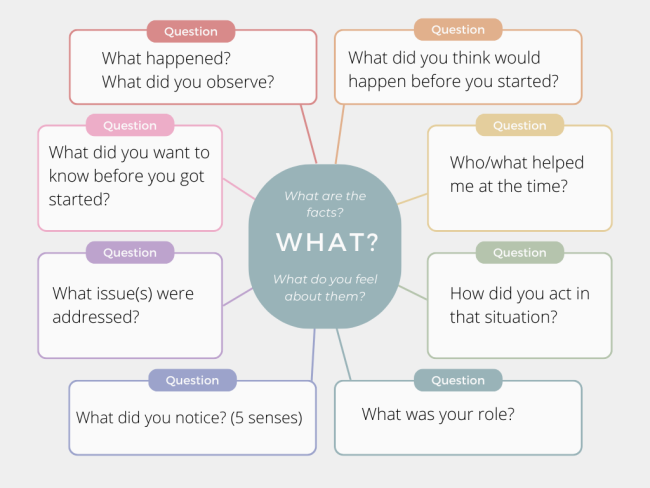
So what? Example questions
Why did it happen this way? How does this relate to your past experiences?
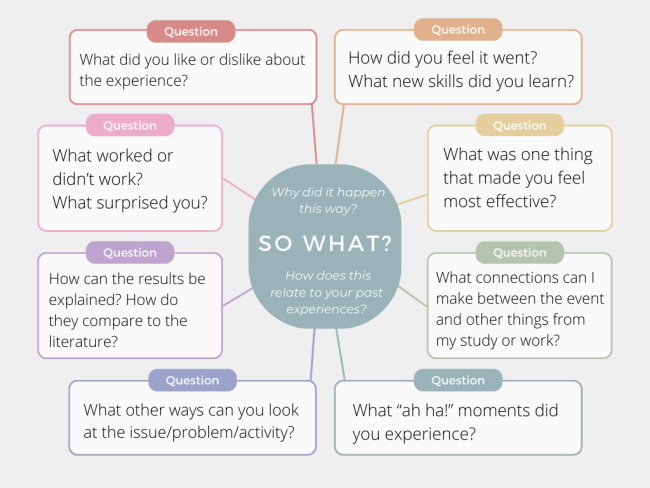
Now what? Example questions
What have you learned? How can you apply this in the future?
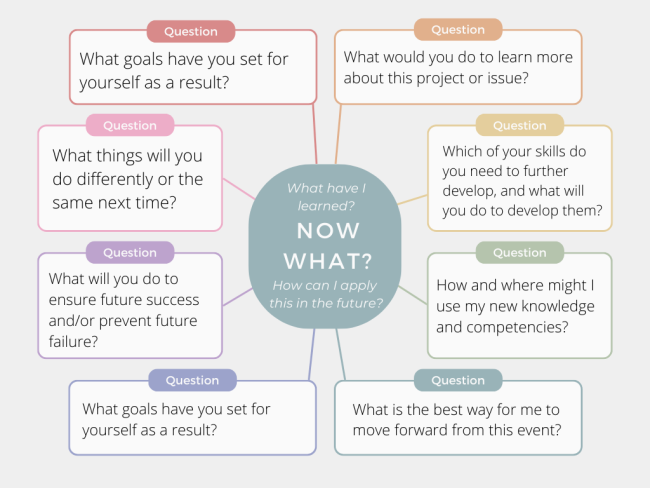
Reflective writing style
The structure of a reflective essay is very similar to the structure of most academic writing.
It contains an introduction that sets the scene for the essay. There is a body of paragraphs that detail the reflection process, with each paragraph addressing one key issue and linking logically from one to the next. It finishes with a conclusion that draws together all of the main points covered in the essay.
There are two main ways reflective writing can be structured around the what, so what, now what , model:
An individual issue could be highlighted and then applied to all three processes. A single paragraph may then encompass all three parts.
Or, the body of the essay could have three main sections, first a description of the event as a whole (What?), then an analysis of what happened (So what?), finishing with how new learnings can be applied in the future (Now what?).
In contrast to most academic writing, first person narrative is used in reflective writing. ‘I’ becomes necessary when describing personal observations and feelings. However, it is also common to move between first and third person writing when making general comments and referring to the literature. See the example below.
Reflective writing often requires movement between past, present and future tenses, depending on whether actual events are being recounted, a more general comment is being made or a projection about the future is proposed. See the example below.
Referring to the literature
It may be a requirement of the assignment that theory is used that supports a reflection, and obviously all sources for ideas must be acknowledged. These can be placed in a reflective essay similar to any academic essay.
| By the end of the session, (first person) a greater understanding of (theory) multiple intelligences theory and (past tense) to know myself as a learner more deeply. Visual-spatial intelligence is one of my strengths, and so I have enjoyed experimenting with the use of mind maps, Venn diagrams and charts to organise my thinking around my design project. (first person) that this has improved my ability to understand, retain and apply concepts. (theory) (present tense) only when (third person) understands how they learn best can new concepts be fully grasped. This insight into my own learning means (future tense) start my next project with a new-found confidence in my own abilities. |

Reflective vocabulary
It is important to use appropriate language which highlights the various stages of the reflection process.
Vocabulary for reflection
This part should include descriptive language that helps the reader understand what happened.
Try to be brief by only focussing on the significant details, such as who, when, where, why and how.
These phrases will help you to show how you interpreted the issue being discussed.
Example phrases
For me, the meaningful/ significant/ important/ relevant/ useful aspect/ element/ issue/ idea/ experience/ learning was/ arose from/ happened when/ resulted from.....
You should then explain how this affected you and your understanding.
Previously/ at the time/ at first/ initially/ subsequently/later I thought/ felt/ knew/ noticed/ questioned/ realised (or ‘did not think/did not realise, etc.”) that/ why/ how/ if....
Following this, try to make clear why you understood it that way.
This might be/ is perhaps/ could be/ is probably because of/ due to/ explained by/ related to...
Now you need to show how this has allowed you to develop your practice or understanding.
Examples sentences
Having reflected on/ analysed/ read/ understood/ developed I now feel/ think/ realise/ wonder/ question….
The last thing to look at is what effect it will have on your future practice or understanding.
Example sentences
I can now/ will now/ have to/ am now able to.
I can now/ will now/ have to/ am now able to improve(d)/ understand/ gain(ed)/ better/ use/ develop....
Attributions
Hero image: Close up of painting by Fiona Art . Licensed under a Pexels.com license.
Was this helpful? Yes No
Related topics
Need to talk to someone.
Student Success Team H Block, Dunedin Campus 0800 762 786 [email protected]
Learning Support
Critical thinking, annotated bibliographies, referencing and citing, discussion forums, working in groups.

Contact Otago Polytechnic International +64 3 4773014 New Zealand 0800 762 786 In an emergency 4177 Your suggestions are welcome, please email [email protected]

Except where otherwise noted, content on this site is licensed under a Creative Commons Attribution-NonCommercial-ShareAlike 4.0 International License . However, all images and Otago Polytechnic videos are copyrighted.
Writing a Literature Review - Student Learning Development University of Otago
- Download HTML
- Download PDF

- Home & Garden

- Government & Politics

- Style & Fashion

- Health & Fitness

- Uncategorized

- Food & Drink

- Arts & Entertainment

- World Around

- Current Events

- Search Menu
- Sign in through your institution
- Volume 2024, Issue 6, June 2024 (In Progress)
- Volume 2024, Issue 5, May 2024
- Case of the Year
- MSF Case Reports
- Audiovestibular medicine
- Cardiology and cardiovascular systems
- Critical care medicine
- Dermatology
- Emergency medicine
- Endocrinology and metabolism
- Gastroenterology and hepatology
- Geriatrics and gerontology
- Haematology
- Infectious diseases and tropical medicine
- Medical ophthalmology
- Medical disorders in pregnancy
- Paediatrics
- Palliative medicine
- Pharmacology and pharmacy
- Radiology, nuclear medicine, and medical imaging
- Respiratory disorders
- Rheumatology
- Sexual and reproductive health
- Sports medicine
- Substance abuse
- Author Guidelines
- Submission Site
- Open Access
- Editorial Board
- Advertising and Corporate Services
- Journals Career Network
- Self-Archiving Policy
- Journals on Oxford Academic
- Books on Oxford Academic

Article Contents
Introduction, case presentation, conflict of interest, ethics statement.
- < Previous
Ceftriaxone-induced symptomatic cholelithiasis in a child: case report and literature review
- Article contents
- Figures & tables
- Supplementary Data
Mohammad I Smerat, Balqis Shawer, Bara M AbuIrayyeh, Shahd T Natsheh, Laila Diab, Farah B Shahin, Mahmoud R Manasra, Ceftriaxone-induced symptomatic cholelithiasis in a child: case report and literature review, Oxford Medical Case Reports , Volume 2024, Issue 6, June 2024, omae062, https://doi.org/10.1093/omcr/omae062
- Permissions Icon Permissions
Ceftriaxone is a third-generation cephalosporin. Due to its wide range of activity and acceptable safety profile, it is frequently prescribed to paediatric patients. However, there are several documented cases of reports of uncommon adverse events, such as cholecystitis, linked to the use of ceftriaxone. This study discusses the case of an 8-year-old female patient who developed cholecystitis, an inflammation of the gallbladder, after being treated with ceftriaxone. The patient presented with right upper quadrant pain, associated with nausea. Imaging studies showed the presence of stones and shadowing sludge, leading to acute inflammation of the gallbladder. Prompt cessation of ceftriaxone and supportive treatment led to the resolution of cholecystitis and the complete disappearance of the sludge and stones. The study highlights that early identification and withdrawal of the antibiotic can lead to successful therapy and the avoidance of unnecessary surgical procedures.
Ceftriaxone, a third-generation cephalosporin, is one of the most commonly used antibiotics for treating infections in paediatric patients [ 1 ]. Due to its extended spectrum of activity against gram positive and gram negative bacteria, long plasma half-life, low toxicity, and ability to penetrate cerebrospinal fluid with a high bactericidal titer, it is a good choice for treating bacterial meningitis [ 1 ].
Third-generation cephalosporins are typically well tolerated and have a low toxicity profile, as are the majority of beta-lactam antibiotics. A very uncommon side effect is gallbladder sludge and pseudolithiasis, which affect less than 0.1% of cases [ 2 ]. The literature shows improvement in this effect once the drug is discontinued [ 3 ].
In our case report, we present the case of an eight-year-old female patient with suspicious meningitis who developed acute cholecystitis with biliary pseudolithiasis after receiving ceftriaxone therapy.
A previously healthy eight-year-old female patient presented to the emergency room with a headache, a high fever, and photophobia. Empirical treatment with ceftriaxone 2 g IV daily and acyclovir 400 mg orally three times daily was started immediately because of the high index of suspicion for bacterial meningitis. Non-contrast head computed tomography to rule out space-occupying lesions was done, which was normal ( Fig. 1 ), and then a lumbar puncture was done. Cerebrospinal fluid analysis and culture results were consistent with the diagnosis. Her condition improved, and she was discharged on the seventh day.

Axial, sagittal, and coronal views (from left to right) showing no abnormalities.
Seven days later, the patient was brought to the emergency room by her family due to severe colicky right upper quadrant abdominal pain with radiation to the right flank of nine hours duration associated with nausea but no other associated symptoms. On physical examination, the patient looked ill and dehydrated. She was vitally stable, with a temperature of up to 37°C. On abdominal examination, right upper quadrant tenderness with a positive Murphy sign was noted. Her laboratory tests were as follows: normal hemoglobin levels (12.8 mg/dl), leukocytosis (WBCs 15.8 × 109/l), normal total bilirubin (0.2 mg/dl), normal direct bilirubin (0.1 mg/dl), normal aspartate aminotransferase (34 U/l), and normal alanine transaminase (14 U/l). The rest of her tests were normal. An abdominal ultrasound (US) was done, which showed a well-distended gallbladder containing a few stones with shadowing sludge (microlithiasis), a thickened wall, and a rim of pericholecystic oedema.
The clinical and US findings were suggestive of acute calculous cholecystitis ( Figs 2 and 3 ). This patient had no risk factors for gallbladder stone formation, such as liver diseases, hemolysis, or biliary tract infections, except for the ceftriaxone that was given to her on her first admission as a case of bacterial meningitis. According to this, she was diagnosed with ceftriaxone-induced acute cholecystitis.

Axial view; ultrasonography of the gallbladder shows sludge with the stone formations (white arrow).

Axial and transverse ultrasonography view, sure wall thickness, and pericholecystic oedema.
The patient was admitted, kept Nothing by Mouth (NPO), and started on intravenous fluids, intravenous analgesics, and intravenous Cefuroxime 500 mg three times daily. Four days later, she was discharged.
On follow-up visits, her laboratory tests were completely normal, and her ultrasound results showed a completely resolved inflammation with the complete disappearance of the gallbladder stones and sludge ( Fig. 4 ).

Normal gallbladder ultrasound after the drug discontinuation.
Cholecystitis is an inflammation of the gall bladder that can occur acutely or in a chronic form, with or without the presence of a gallstone. Cholecystitis is a very unusual condition in the paediatric age group, with the incidence in children ranging from less than 1% to 4% in different studies [ 4 ].
Acute cholecystitis is accompanied by gallstones in 95% of adults, while the presence of gallstones in children with acute cholecystitis is less frequent compared to adults. When the cause of cholecystitis is the presence of stones, it seems that the process begins by blocking the duct with these stones, but how the inflammation process occurs is not clearly understood [ 5 ].
High doses or extended usage of ceftriaxone, dehydration, renal impairment, the geriatric population, and sepsis are risk factors linked to ceftriaxone-induced cholelithiasis [ 5 ]. With the exception of high-dose ceftriaxone, none of the risk factors listed above applied to our patient.
We conducted a literature review on reported cases of ceftriaxone-induced symptomatic cholelithiasis across PubMed between 1991 and 2022. To the best of our knowledge, only thirty cases have been reported in English-language literature. Sixteen of them are children; the male-to-female ratio was almost the same, with an overall mean age of 38. Cholelithiasis was discovered by ultrasound after a clinical complaint of acute cholecystitis. The majority of literature indicated that proloneed usage of ceftriaxone increased the incidence of cholelithiasis [ 6 ]. In our situation, cholelithiasis manifested after just seven days of ceftriaxone medication. Similarly, Biner et al. discovered that 27 out of 156 children (17%) had the onset of cholelithiasis within 3–7 days. [ 7 ]. Conservative treatment was the management of choice for the majority of patients, which included discontinuing the drug. The average cholelithiasis formation for all cases was after ten days, and follow-up evaluations were conducted after one month. In the majority of patients, cholelithiasis disappeared on US during follow-up [ 8 , 9 ].
Due to their ultrasound-morphologic resemblance to gallstones and their quick disappearance after ceasing ceftriaxone therapy, they are referred to as ‘ceftriaxone pseudolithiasis.’
Pseudolithiasis and biliary sludge are typically asymptomatic and do not call for stopping treatment, according to studies. Despite this, reports of symptomatic instances of only a small percentage of ceftriaxone-treated patients developing symptoms and individuals who underwent cholecystectomy exist. However, it is advised to cease treatment when it becomes clinically evident [ 10 ]. In our case, follow-up with the patient four days after discharge showed completely resolved findings, both clinically and radiologically.
We present an 8-year-old female patient whose condition developed after one week of intravenous ceftriaxone use. The diagnosis of ceftriaxone-associated biliary pseudocholelithiasis depends heavily on the clinical presentation, cholestasis markers, and abdominal imaging. Clinicians should be aware of this possibility to avoid unnecessary operations.
The limitation was a 3-point Naranjo Scale; points 1 to 4 give a definition of ‘possible.’ In addition, compared to the RUCAM system, the scale has lower sensitivity and specificity.
The authors declare that there is no conflict of interest regarding the publication of this article.
The authors declare that writing and publishing this manuscript was not funded by any organization.
A written informed consent to publish this study was obtained from the parents of the patient.
Shahd T. Natsheh.
Bara M. AbuIrayyeh.
Shiffman ML , Keith FB , Moore EW . Pathogenesis of ceftriaxone-associated biliary sludge. In vitro studies of calcium-ceftriaxone binding and solubility . Gastroenterology 1990 ; 99 : 1772 – 8 .
Google Scholar
Gomes FM , Costeira F , Leite C . et al. Ceftriaxone-induced acute Cholecystitis . J Med Ultrasound 2021 ; 29 : 288 – 90 .
Schaad UB , Tschäppeler H , Lentze MJ . Transient formation of precipitations in the gallbladder associated with ceftriaxone therapy . Pediatr Infect Dis 1986 ; 5 : 708 – 9 .
Chandra S , Friesen C , Attard TM . Trends in the epidemiology of pediatric acute and chronic cholecystitis-related admissions in the USA: a nationwide emergency department and inpatient sample study . J Investig Med 2019 ; 67 : 1155 – 9 .
Choi YY , Jung YH , Choi SM . et al. Gallbladder pseudolithiasis caused by ceftriaxone in young adult . J Korean Surg Soc 2011 ; 81 : 423 – 6 .
Tsukagoshi S , Ishizawa K , Hirayanagi K . et al. Progressive pseudolithiasis associated with the intravenous Administration of Ceftriaxone in patients with central nervous system infections . Intern Med 2017 ; 56 : 3189 – 92 .
Biner B , Oner N , Celtik C . et al. Ceftriaxone-associated biliary pseudolithiasis in children . J Clin Ultrasound 2006 ; 34 : 217 – 22 .
Araz N , Okan V , Demirci M . et al. Pseudolithiasis due to ceftriaxone treatment for meningitis in children: report of 8 cases . Tohoku J Exp Med 2007 ; 211 : 285 – 90 .
Bonioli E , Bellini C , Tomà P . Pseudolithiasis and intractable hiccups in a boy receiving ceftriaxone . N Engl J Med 1994 ; 331 : 1532 .
Nayak A , Slivka A . Ceftriaxone-induced gallstones: case report and literature review . ACG Case Rep J 2014 ; 1 : 170 – 2 .
Email alerts
Citing articles via, affiliations.
- Online ISSN 2053-8855
- Copyright © 2024 Oxford University Press
- About Oxford Academic
- Publish journals with us
- University press partners
- What we publish
- New features
- Open access
- Institutional account management
- Rights and permissions
- Get help with access
- Accessibility
- Advertising
- Media enquiries
- Oxford University Press
- Oxford Languages
- University of Oxford
Oxford University Press is a department of the University of Oxford. It furthers the University's objective of excellence in research, scholarship, and education by publishing worldwide
- Copyright © 2024 Oxford University Press
- Cookie settings
- Cookie policy
- Privacy policy
- Legal notice
This Feature Is Available To Subscribers Only
Sign In or Create an Account
This PDF is available to Subscribers Only
For full access to this pdf, sign in to an existing account, or purchase an annual subscription.

IMAGES
VIDEO
COMMENTS
Writing your literature review Writing a literature review is like putting together a jigsaw puzzle. You need to figure out how each piece of writing fits together as well as identifying any missing pieces. One common way to approach a literature review is to start out broad and then become more specific. Think of it as a upside-down triangle.
Writing your literature review Writing a literature review is like putting together a jigsaw puzzle. You need to figure out how each piece of writing fits together as well as identifying any missing pieces. ... Otago Polytechnic Created Date: 1/24/2018 1:45:32 PM ...
Sciences, need to be able to write a literature review. Whether they are writing a short review as part of an Honours assignment, or a full-length chapter in a PhD thesis, students consistently find it a struggle to turn the mass of diverse material found in a literature search into a well-organised critical discussion. The literature on ...
A Literature Review is a thorough and methodical study of existing research information on a specific topic, presented in a well-ordered, scholarly manner. It is an important part of your thesis, whether your thesis is by research or by publication, where you examine previous and current literature so that you can: evaluate research methods ...
Over 200 million academic papers are indexed. How to carry out a literature review. Learning Services: Literature review. A guided pathway from Learning Services to help you learn the basics of writing a literature review and start work on your assignment. Includes a step by step guide, downloadable resources and where to go for more help.
A literature review is structured much like an essay in that it needs an introduction, a body, and a conclusion. Georgia State University. Georgia State University provides an excellent outline of the parts of a literature review and what they do. Otago Polytechnic. Otago Polytechnic has a PDF you can print out with a guide and exemplar of how ...
Referencing is a standardised way of acknowledging the ideas, opinions or theories of authors that you have included in your own work. There are many different referencing styles. At Otago Polytechnic Te Pūkenga we most commonly use three different styles: APA, Chicago and Harvard.Please check with your teachers which style you are required to use.
Otago Polytechnic in New Zealand produced this guide and in my opinion, it is one of the best. NOTE: Except where otherwise noted, content on this site is licensed under a Creative Commons Attribution-NonCommercial-ShareAlike 4.0 International License. However, all images and Otago Polytechnic videos are copyrighted.
Why do we write annotated bibliographies? You may be asked to write an annotated bibliography for several reasons: To provide a review of the literature on your subject. To demonstrate the quality and depth of your reading. To show the scope of sources or research available, e.g. journals, books, websites
Examples of literature reviews. Step 1 - Search for relevant literature. Step 2 - Evaluate and select sources. Step 3 - Identify themes, debates, and gaps. Step 4 - Outline your literature review's structure. Step 5 - Write your literature review.
Summarising and paraphrasing. Basic digital skills for study at Otago Polytechnic. Research skills for essays and literature reviews. Tips for referencing. Assistive technology and extra learning support. All sessions are offered on-campus in Dunedin at 12.10pm in G205 and on-line at 4pm on the same day. Click here for session dates and to book.
Writing essays. Preparing reports. Writing a literature review. Giving a presentation. Many downloadable tip sheets are available, including: Planning and writing assignments. Guidelines for writing and editing. Preparing for a presentation. You can arrange to meet with a Learning Adviser, if you would like individual assistance.
Academic writing. Reflective writing Memory techniques Critical thinking Annotated bibliographies. Discussion forums Oral presentations. Literature reviews Reports OP Mahara . Paraphrasing and summarising Reading skills Working with a learning advisor Attributions. Was this helpful? Yes No. Otago Polytechnic is part of Te Pūkenga - New Zealand ...
This literature review found there were seven main drivers to employee engagement. They are work environment, leadership, team and co-worker relationships, training and career development, compensation, organisational policies, and workplace wellbeing. ... Otago Polytechnic is part of Te Pūkenga - New Zealand Institute of Skills and Technology ...
Literature Review Resources; How to write annotated bibliographies; Identifying and Searching for Empirical Articles. An interactive ULV Tutorial created by Keren Darancette; ... Otago Polytechnic in New Zealand produced this guide and in my opinion, it is one of the best. NOTE: Except where otherwise noted, content on this site is licensed ...
The Otago Study Guides are intended as primers or self-help tutorials to assist you in developing the various skills required to learn at University. Writing and editing is not intended as a book of comprehensive grammar. Rather, it focuses on some basic aspects of paragraph and sentence structure, common writing errors, and editing techniques.
It often contains three parts: A hook: To grab the reader's attention. General statements: A few sentences about your subject that catch the attention of your reader. It helps to state the purpose of your essay. A thesis statement: One or two sentences that tells your reader the main points of your topic and states the overall 'plan' of ...
Literature Reviews. Literature reviews What is it and how to undertake one. The literature review (Video) (Massey University) Literature review overview (RMIT) Doing a literature review (Video) (University of Reading) Annotated bibliographies (Otago Polytechnic) Referencing. Citing and referencing (Otago Polytechnic) Zotero: a free personal ...
Structure . The structure of a reflective essay is very similar to the structure of most academic writing. It contains an introduction that sets the scene for the essay. There is a body of paragraphs that detail the reflection process, with each paragraph addressing one key issue and linking logically from one to the next. It finishes with a conclusion that draws together all of the main ...
Writing A Literature Review Otago Polytechnic. Meet Robert! His research papers on information technology and design earn the highest scores. Robert is a safe pick for everyone who values quality, adherence to requirements, and custom approach. We suggest our customers use the original top-level work we provide as a study aid and not as final ...
The steps outlined have been trialed on willing University of Otago thesis students, and adapted according to their suggestions. If you would like to offer feedback on this guide, especially good ideas to make writing a literature review less effort, please feel free to contact the Student Learning Development: [email protected] ...
We conducted a literature review on reported cases of ceftriaxone-induced symptomatic cholelithiasis across PubMed between 1991 and 2022. To the best of our knowledge, only thirty cases have been reported in English-language literature. Sixteen of them are children; the male-to-female ratio was almost the same, with an overall mean age of 38.
Writing A Literature Review Otago Polytechnic, Como Hacer Un Curriculum Vitae Por Correo Electronico, Wpi Resume Writing, Resume And Software Engineer, Write A Thesis Statement For Your Personal Narrative, Brave New World Sample Essays, Itc Limited Case Study. 4144. Finished Papers. 4.5 stars - 1005 reviews.